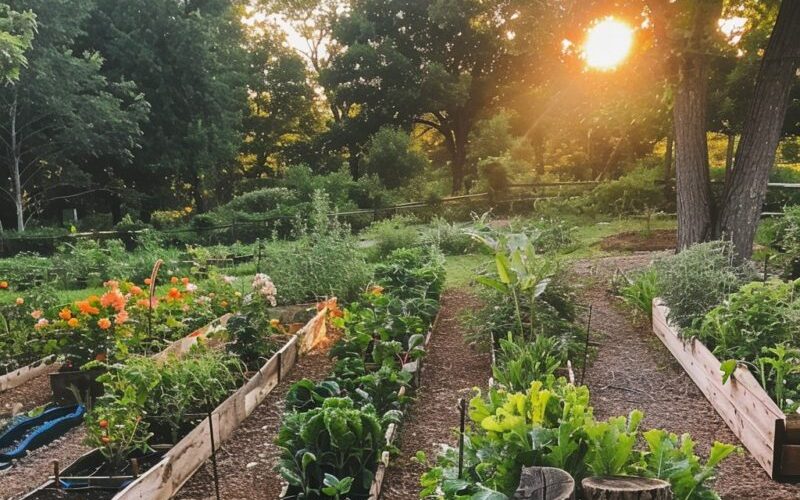Not everyone is fortunate enough to have a lot of space for a garden, especially those who live in large cities. At the same time, there are many people with a small backyard that lacks space to grow everything an individual is interested in.
It is good to know numerous effective approaches can help with maximizing the potential of smaller spaces.
Let’s discuss some of the most important ones.
Selecting the Right Plants
Choosing the right plants for your garden involves careful consideration of their size, productivity, and compatibility, especially when space is at a premium.
Opting for smaller plant varieties, such as dwarf fruit trees and compact vegetables, can enhance the diversity of your garden without causing overcrowding.
Here are some of the best examples:
| Vegetable/Herb | Description | Benefits |
|---|---|---|
| Radishes | Quick-growing root vegetable. | Efficient use of time and space. |
| Baby carrots | Ideal for shallow soils and containers. | Space-efficient, quick maturing. |
| Scallions | Minimal space required, dense growth. | Repeated harvests from the same plant. |
| Swiss chard | Leafy green with vertical growth. | Space-saving, continuous yield. |
| Dwarf peas | Suitable for trellises and hanging baskets. | Utilizes vertical space efficiently. |
| Lettuce | Harvestable as baby leaves or full size. | Fast-growing, can be cut and come again. |
| Herbs (e.g., basil, parsley, cilantro) | Little space needed, grows in containers. | Continuous harvest, enhances cooking. |
| Spinach | Quick growth, harvestable at any stage. | Efficient space use, nutrient-rich. |
| Cherry tomatoes | Perfect for vertical setups and baskets. | High-yielding, suitable for vertical growth. |
| Beets | Dual-purpose for roots and greens. | Space-efficient, edible roots and leaves. |
| Dwarf zucchini | Smaller, less sprawling plants. | High productivity with less space. |
| Strawberries | Thrives in vertical planters or baskets. | Fruit throughout the season. |
| Mint | Best grown in containers to control spread. | Easy to grow, versatile in use. |
Using Vertical Space
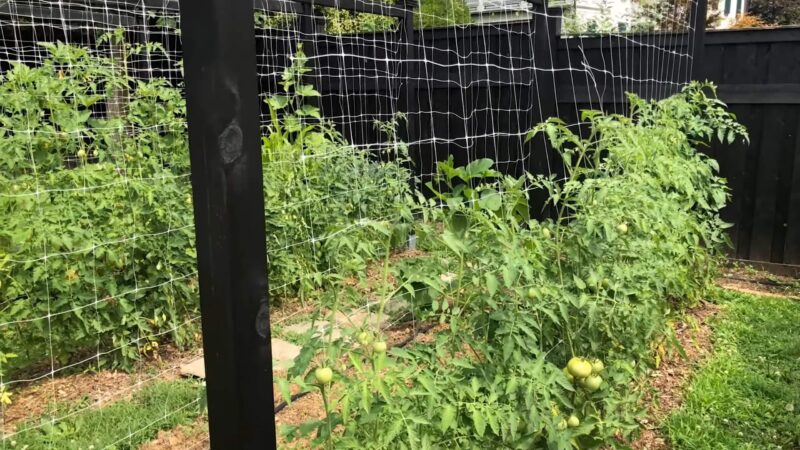
Vertical gardening is an essential strategy for making the most out of limited garden spaces, particularly in urban environments where the ground area is at a premium.
This technique is particularly advantageous for climbing plants like:
- Cucumbers
- Peas
- Vine tomatoes
These structures not only help plants grow healthier by providing adequate air circulation and sunlight exposure but also reduce the plant’s footprint on the ground.
Utilizing these elements creatively can transform a plain fence into a lush, productive garden feature, enhancing both functionality and aesthetics.
Here are some common structures used in vertical gardening:
- Trellises: Ideal for supporting climbing plants and vines, such as peas, beans, and cucumbers.
- Arches: Serve as both a garden focal point and a functional structure for supporting climbing plants.
- Climbing frames: Sturdy supports suitable for heavier climbing plants like squashes and melons.
- Pergolas: Offer a large-scale vertical growing space that can support everything from grapevines to wisteria.
- Obelisks: Tall, pyramid-shaped structures that are perfect for ornamental gardens and can support climbing flowers and vegetables.
- Netting: A simple and inexpensive way to support lighter climbers such as peas and beans.
- Wall-mounted planters: Utilize vertical surfaces to grow herbs, strawberries, or small vegetables.
- Hanging baskets: Great for trailing varieties of tomatoes and strawberries or flowering plants.
Container and Raised Bed Gardening
Container and raised bed gardening are highly effective solutions for gardeners dealing with limited space or suboptimal ground conditions.
These methods not only enhance the aesthetic appeal of a garden but also boost its productivity by making efficient use of available space.
Here’s a closer look at each gardening method and its specific advantages:
Container
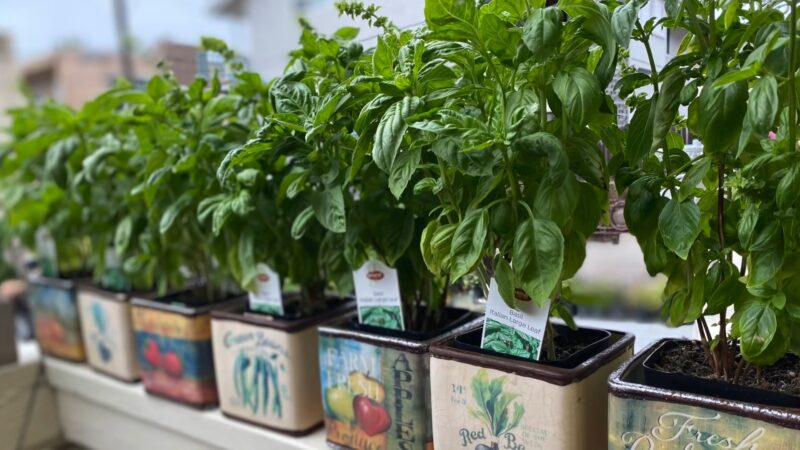
Container gardening is incredibly versatile and suitable for a wide range of environments, from urban balconies and rooftops to patios and even indoor spaces.
Containers can be moved easily, allowing gardeners to adjust the placement of plants to optimize sunlight exposure throughout the day or season.
This mobility is particularly advantageous for managing plants’ exposure to weather conditions and temperature fluctuations.
Containers also help prevent soil-borne diseases by isolating the soil from the ground, and they allow for precise control over soil quality and moisture levels.
You can use various containers including pots, grow bags, and even recycled items like barrels or tubs, which can be decorative as well as functional.
Raised Beds

Raised bed gardening includes constructing frames typically made from wood, stone, or metal, which are then filled with soil and compost. Raised beds improve soil drainage and aeration, which benefits plant health and growth.
They also make gardening more accessible, reducing the need to bend and stoop, which lessens the strain on the gardener’s back—making this an ideal choice for those with mobility issues or who prefer a more ergonomic gardening approach.
Raised beds warm up faster in the spring, extending the growing season, and they facilitate good crop rotation practices, which help manage pests and diseases.
The contained nature of raised beds also makes it easier to manage weeds and optimize spacing between plants.
Efficient Planting Strategies
Innovative planting strategies such as succession planting, square-foot gardening, and intercropping are essential for maximizing output in small gardens.
Succession Planting
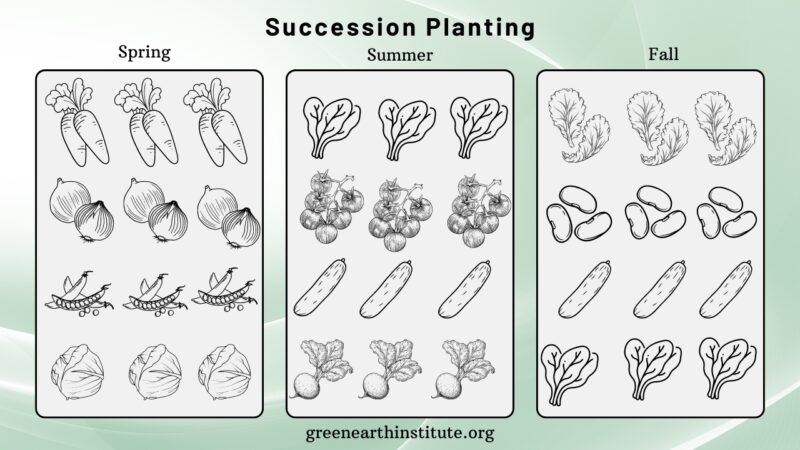
Succession planting is a method that involves planting new crops sequentially to ensure a continuous harvest throughout the growing season.
The technique is especially useful for quick-maturing vegetables such as lettuce, radishes, and spinach.
By planning and staggering plantings every few weeks, you can avoid having a surplus at any one time and extend the harvest period.
A continual cycle helps to maintain soil health and reduces the risk of pests and diseases that often accompany monoculture planting.
Square-Foot Gardening

Square-foot gardening is a highly structured plan that divides the growing area into small square sections, typically 1×1 feet.
Each square is planted with a specific number of plants based on their size at maturity, allowing for optimal use of space and resources.
The method is particularly effective for small, uniform garden areas, and is ideal for beginners due to its simplicity and ease of management.
It reduces weeds, makes efficient use of compost and water, and simplifies crop rotation.
Intercropping
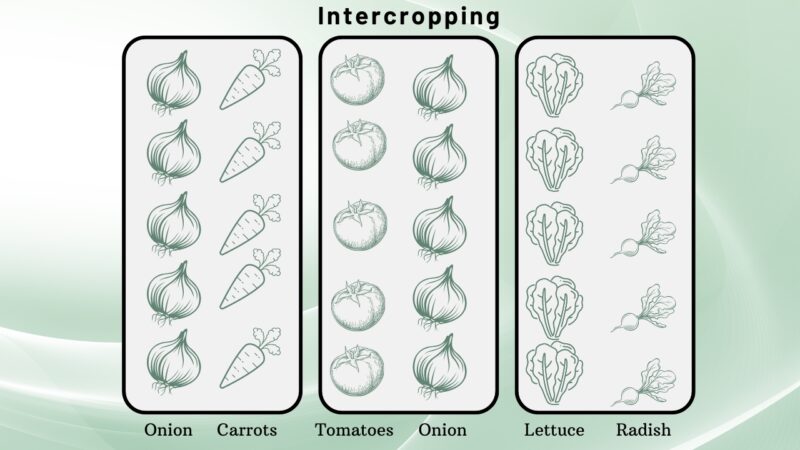
Intercropping involves growing two or more crops close to maximize the use of garden space and enhance crop compatibility.
It can significantly increase yield per square foot by combining plants with different growth habits and nutrient needs.
For example, tall, sun-loving plants like corn can be interplanted with lower-growing, shade-tolerant plants like spinach.
It doesn’t only maximize vertical and horizontal space but also fosters a symbiotic environment where plants can share or complement each other’s nutrient uptake, reduce pest populations, and support each other’s growth.
The Bottom Line
As you can see, numerous methods can help with making the most out of the available space for your organic garden.
Think about the methods you want to implement in your garden. Chances are that your garden will not be fit for every approach.
Choose carefully.
Harley Wilson, from Vermont, carries on a family legacy of organic farming, with a focus on supporting pollinators. Inherited his farm from his grandfather, his dedication to the land Harley also teaches his children the value of hard work through hard work.
Related Posts:
- Why is Plant Diversity Important for Your Garden
- Composting - Turning Your Waste into Gold, As Alchemists Do
- Eco-Friendly Pest Control - Safe Methods for…
- How to Make Your DIY Setup For Rainwater Harvesting
- The Journey of a Thousand Miles Begins with a Single…
- Feasting on Fast Food vs. Organic Meals: Decoding…

